How to Start a Flower Garden
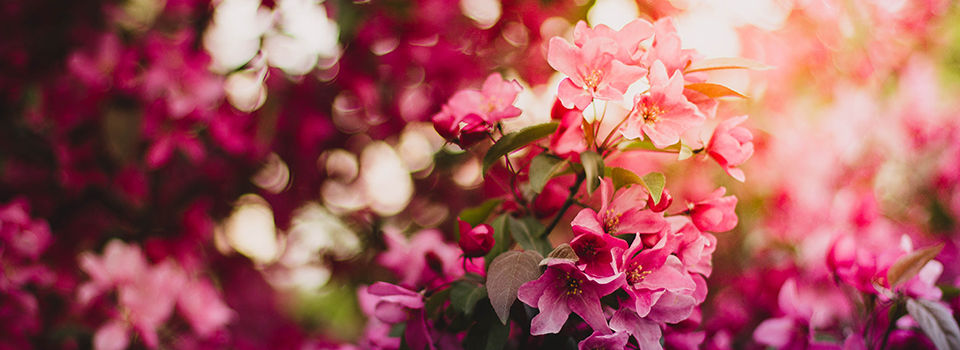
When starting a flower garden, the first and most important stage is the planning stage. Before you ever shop for flowers or reach for a shovel, it’s important to know where your flower garden will be, what plants will grow best in your garden, and where those plants should be placed for the best blooms possible.
How do you start a flower garden?
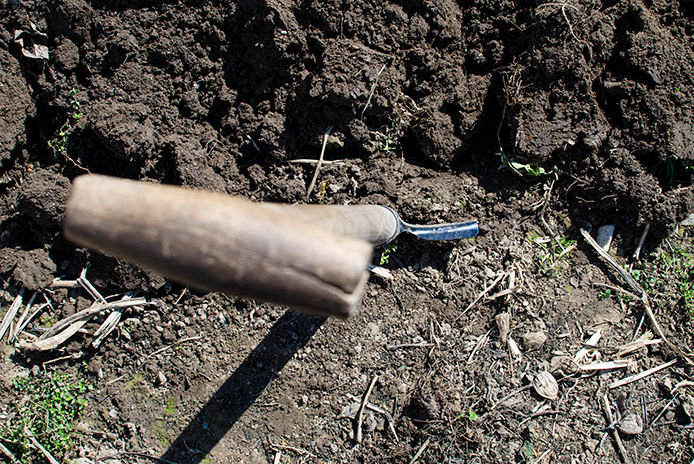
First, decide where you would like your flower garden. Be sure to keep in mind sun and shade exposure. You can find flowers that are full sun, full shade, and anywhere in between. If you have specific flowers that you know you want to use, make sure to find a spot that will work for that particular type of flower.
Depending on how quickly you want to plant your flower garden, you have two options for removing grass and any other unwanted plants. For quicker results, use a flat spade to dig up unwanted vegetation. This will take some time and you’re sure to have some sore muscles tomorrow, but you’ll have a flower bed ready to plant in no time! Your other option involves spraying grass and plants with a herbicide like Roundup. If you choose this option, you’ll feel less pain, but you’ll also need to wait about a week before tilling the bed and planting.
Once your garden bed is ready to start planting, spread some organic matter, such as compost leaves or well-rotted manure. Try for about two to three inches to get a healthy base for your new plants.
Now, you can turn your soil over using a spade or garden tiller. Go for the tiller! Let’s face it: it’s easier, faster, and you won’t be aching for days. Rake any large dirt clumps so you end up with a level garden bed. Now, you’re ready to pick out your plants!
What’s the difference between annuals and perennials?
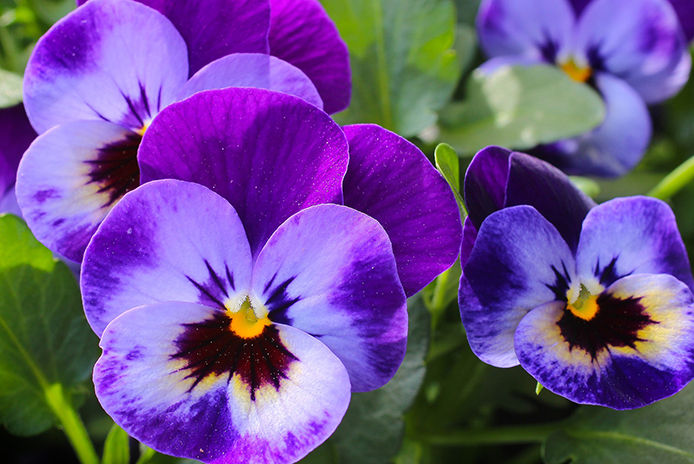
Annual Flowers
Annual flowers are those that you plant each year. Most annuals bloom from spring through fall, which is much longer than a perennial. Some examples of staple annuals are:
- Pansies
- Petunias
- Impatiens
- Marigolds
- Zinnias
- Begonias
- Scarlet Sage
- Geraniums
- Coleus
- Poppies
While annuals have to be planted every year, they require less work. You don't have to worry about dividing or trimming annuals, and they will give you brighter blooms all season long.
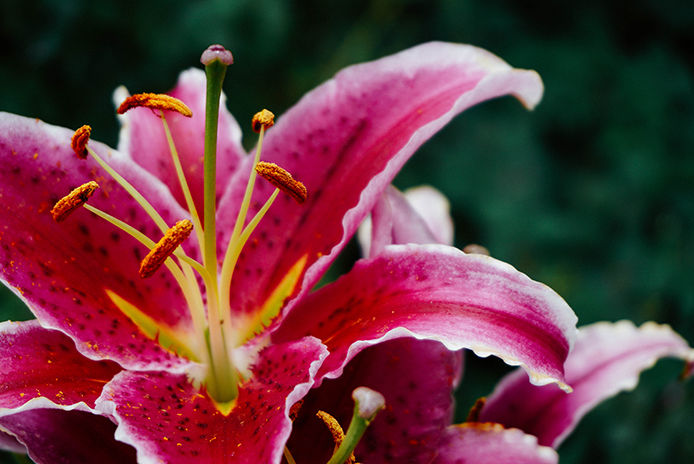
Perennial Flowers
Perennials will come back year after year, some hardier perennials may even last 20 years or more! Although perennials will come back, they tend to have a shorter blooming period, usually one to three weeks. Some of the easiest to care for perennials include:
- Tulips
- Salvia
- Lilies
- Peonies
- Irises
- Hostas
- Mums
Perennials may seem like they are less work, since you don’t have to plant them every year, but they do require some care including dividing and trimming. Just a note, plants should never be moved or trimmed while still in bloom. You can divide and move plants before blooms start or after they have stopped. Perennials are great plants to divide and pass on to family and friends too!
Combining annuals and perennials will keep your garden blooming longer and offer different colors and textures.
How do I know where to plant my flowers?
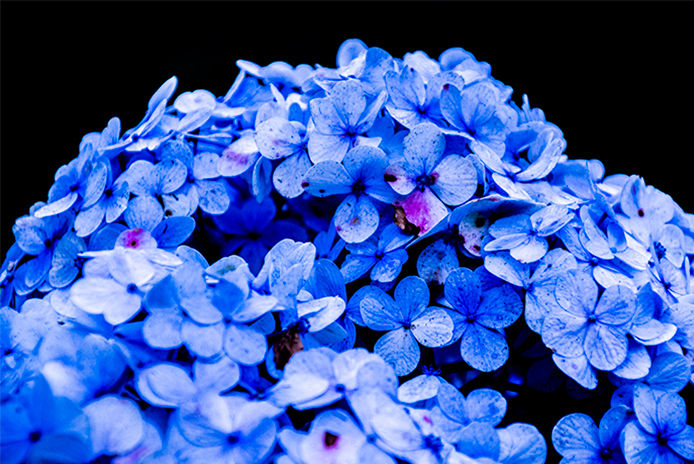
Once you have your flower bed prepared and you know which types of plants you want, it’s important to think about sun exposure based on the type of flowers you pick. Some flowers require shade, some partial sun, and some full sun. Knowing your plants can really help to make sure you aren’t wasting money, time, and effort planting your flower garden only to have plants die from too much sun.
Flowers that survive best in full shade (less than 4 hours of direct sun a day):
- Begonias
- Impatiens
- Hydrangeas
- Pansies
- Forget-me-nots
- Violets

Flowers that survive best in partial sun or partial shade (4 to 6 hours of direct sun a day):
- Bluebells
- Coral Bells
- Clematis
- Sweet Alyssum
- Coleus
Partial sun flowers also tend to grow best if their sun exposure comes in the morning or evening, rather than the middle of the day when the sun is at its hottest.
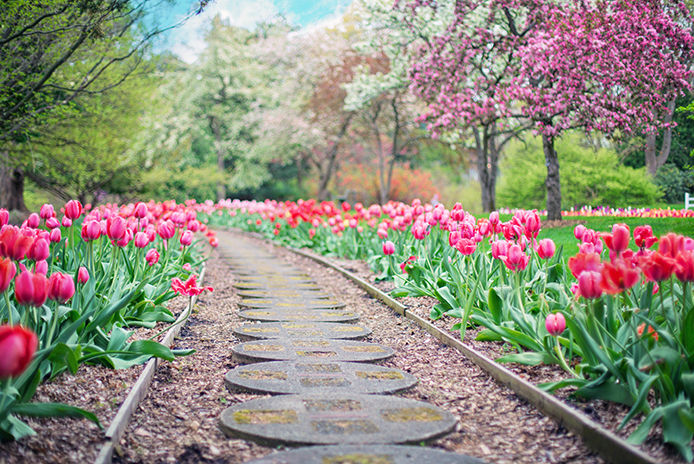
Flowers that survive best in full sun (6 or more hours of direct sun a day):
- Tulips
- Petunias
- Marigolds
- Geraniums
- Salvias
- Lilac Bushes
How to Create a Color Scheme for Your Garden
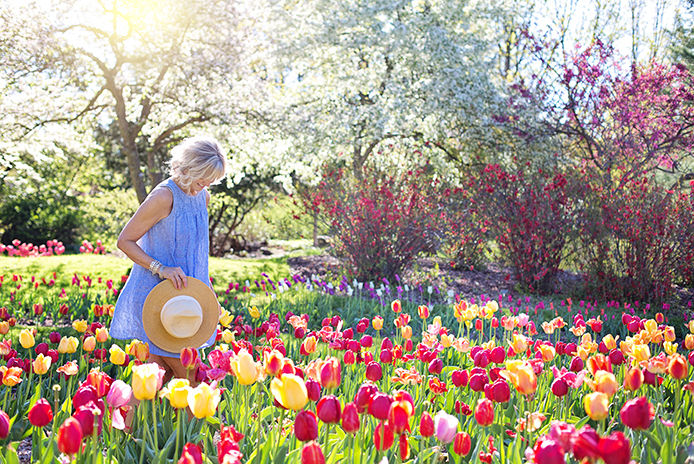
When it comes to color, all designers agree that it’s best to limit the amount of colors in your garden. Try to shoot for three or four colors. Doing so will help to create a more cohesive look. Also, breaking up brightly colored flowers with an evergreen can give your eyes a visual break. If you feel you need more than three or four colors, opt for either all cool colors, all warm colors, complementary colors, or analogous colors.
- Cool colors: blues, purples, and pale pastels
- Warm colors: red, orange, yellow, and bronze
- Complementary colors, colors across from each other on the color wheel: red and green, orange and blue, etc.
- Analogous colors, colors next to each other on the color wheel: red and yellow, yellow and green, etc.
How to Arrange Flower Gardens
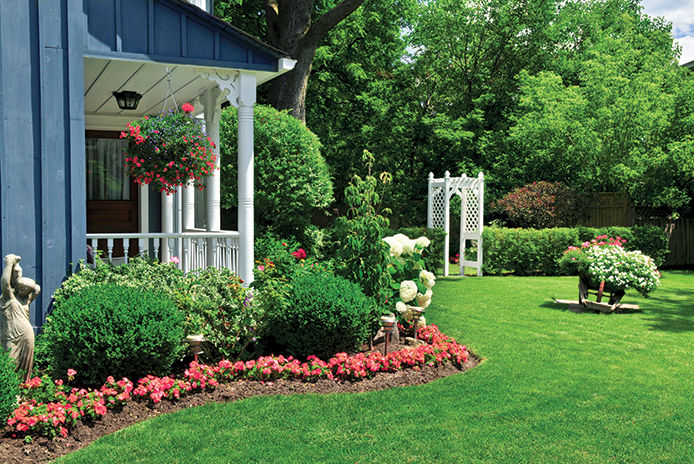
Flower placement is key to making your flower bed look its best! The tallest plants should be in the back of your flower bed as a backdrop to your smaller, usually more colorful flowers. Trees and shrubs fit the bill for this because they tend to be larger in size than most flowers. A nice mix of evergreens and deciduous, flowering shrubs will help colorful flowers really pop! Many evergreens also come in dwarf selections, so they don’t outgrow your garden bed.
Because deciduous plants have leaves or blooms that fall off once they reach maturity, these plants fall somewhere between evergreens and your normal flowers. They're usually larger plants that help to provide a backdrop for smaller flowers, but they tend to have blooms as well to offer a little bit of color.
Flower gardens are a lot of work and require quite a bit of planning, but if done right they offer enjoyment for years to come.